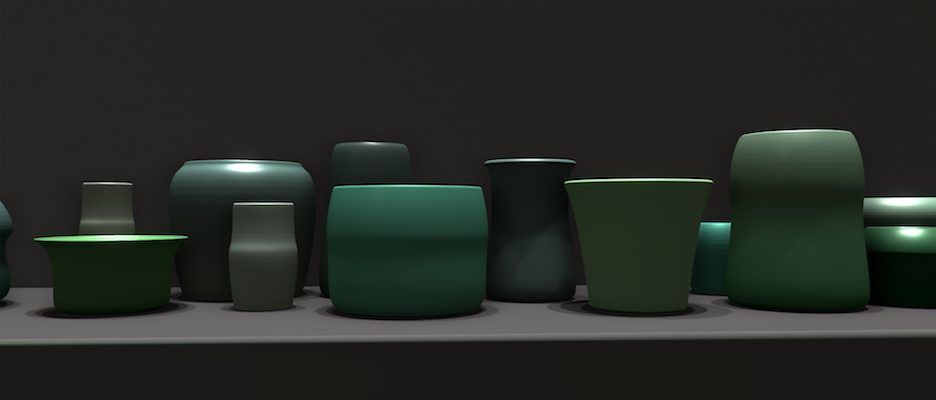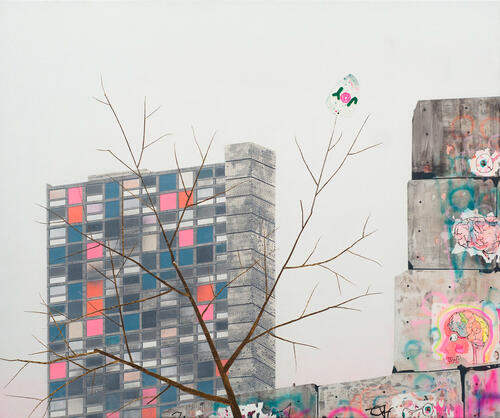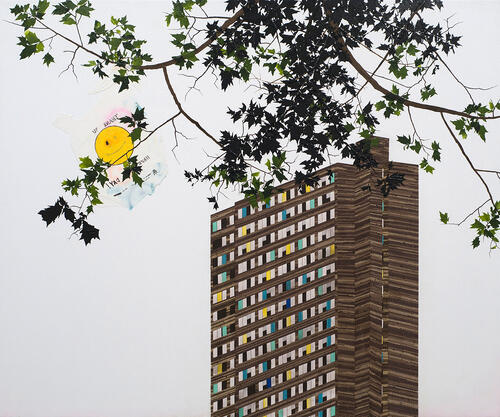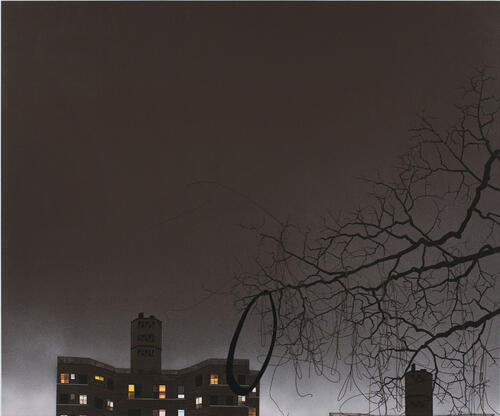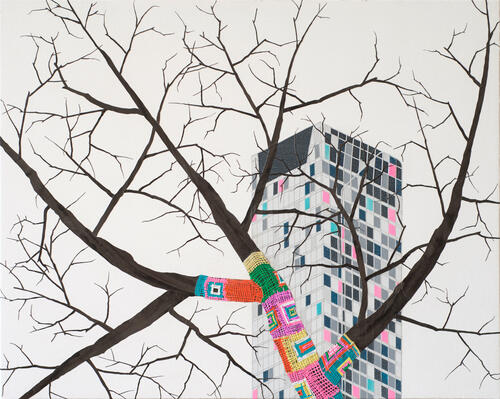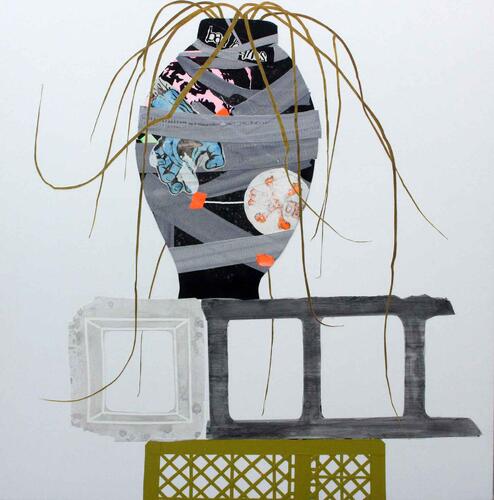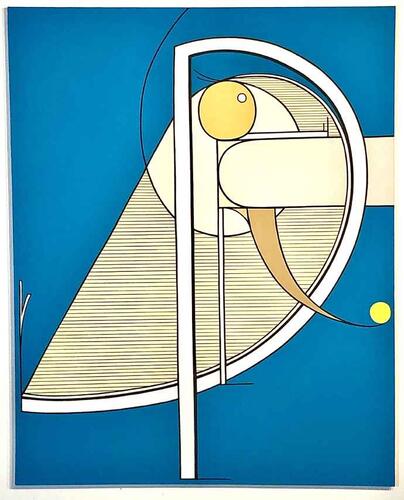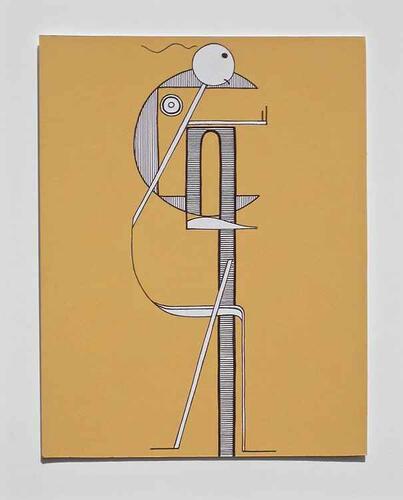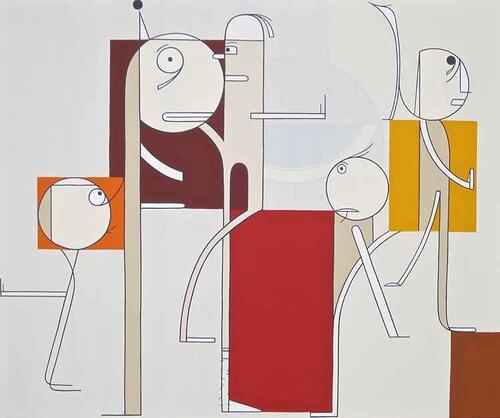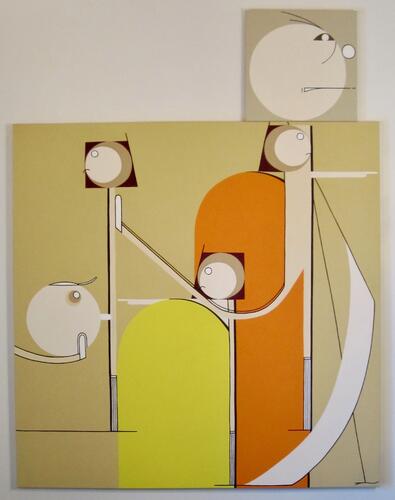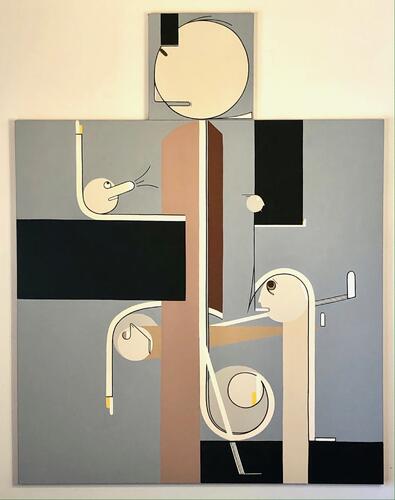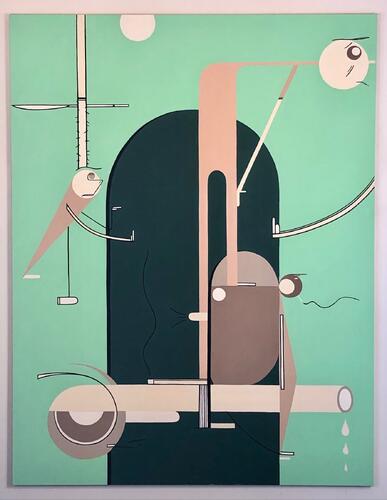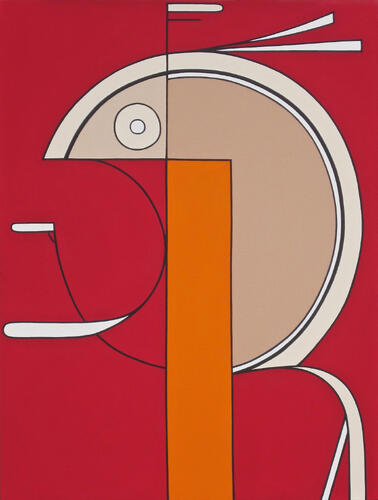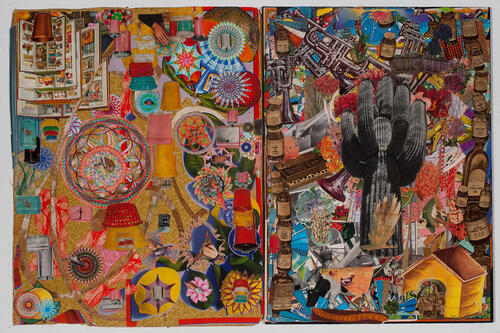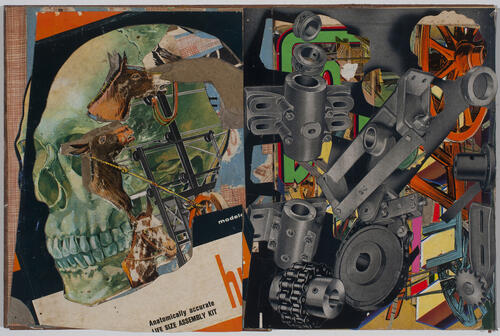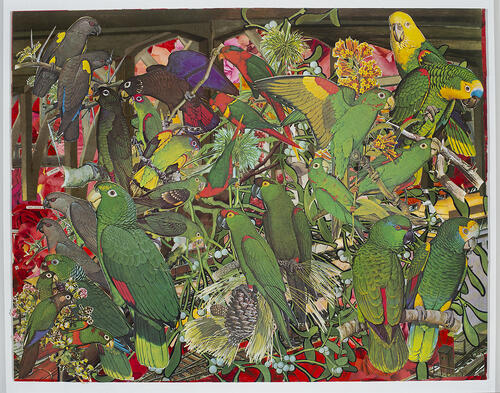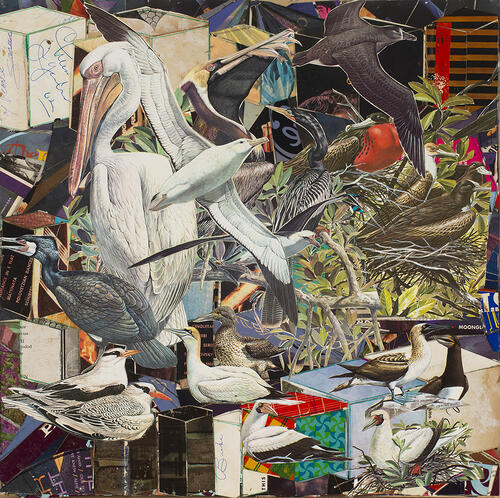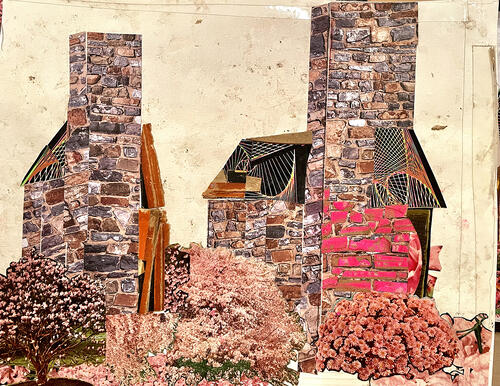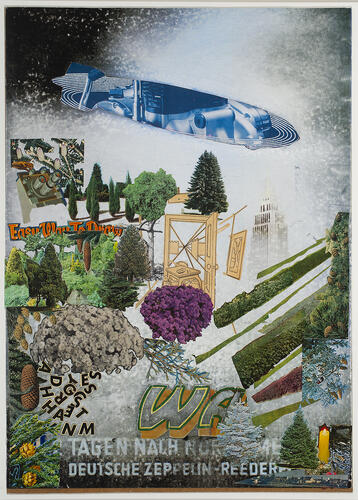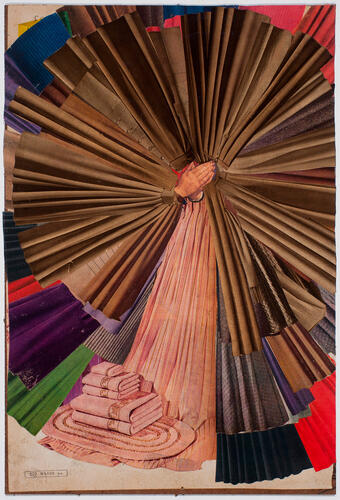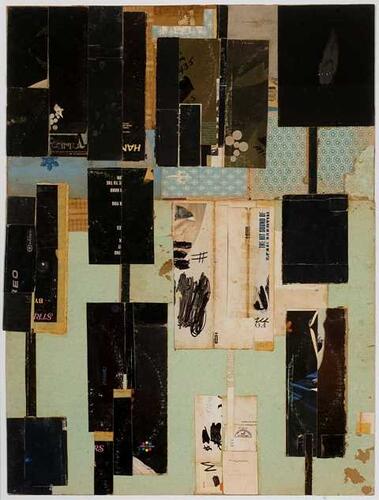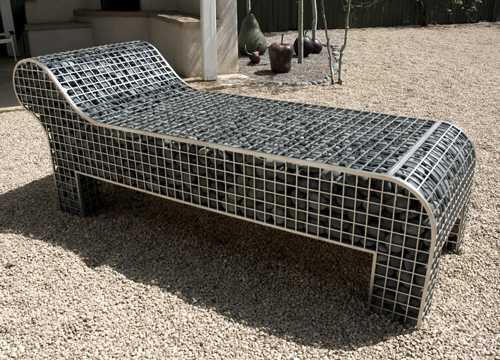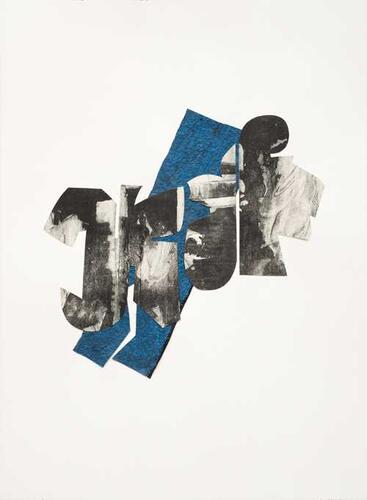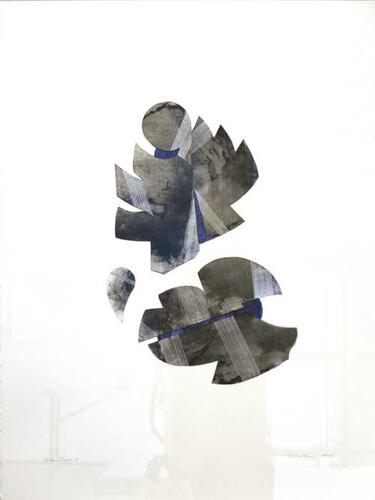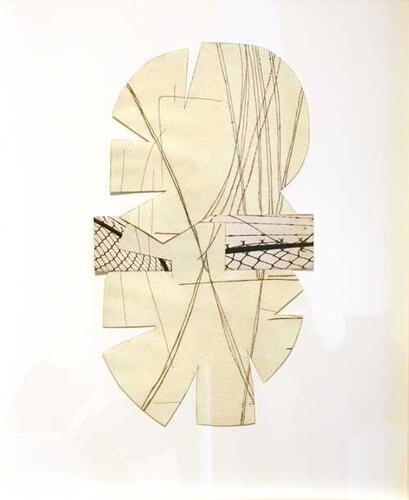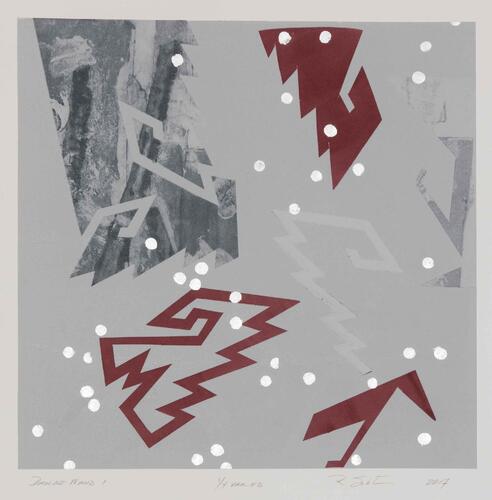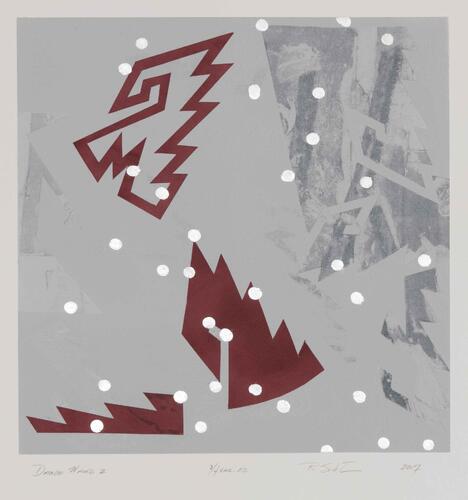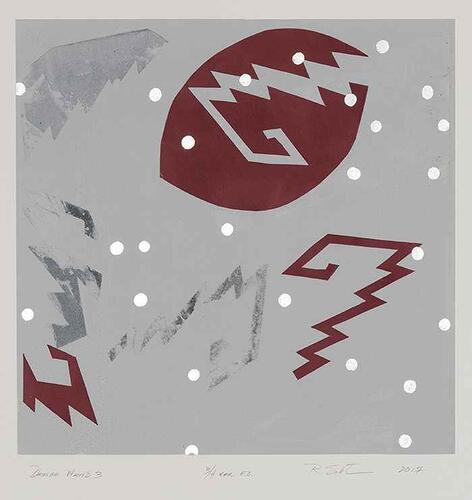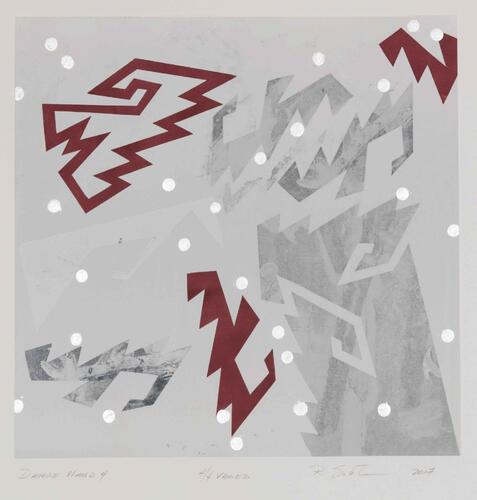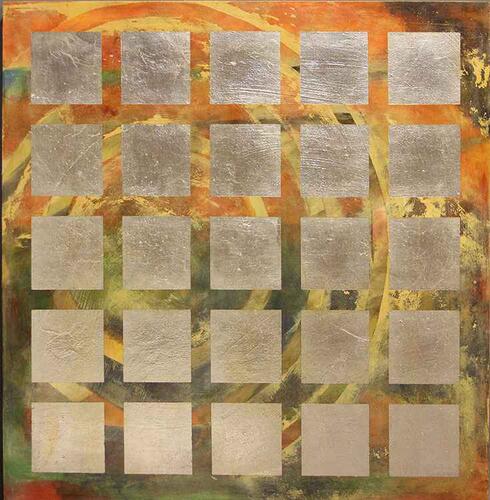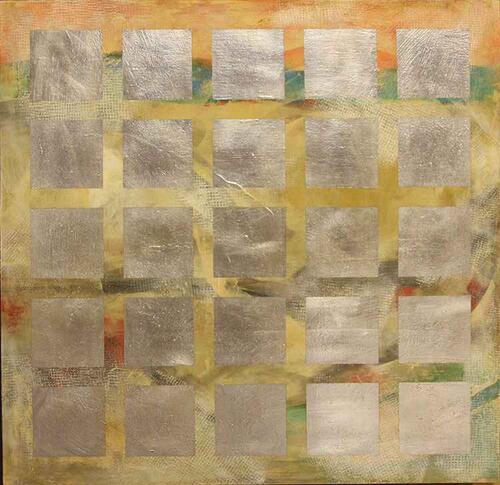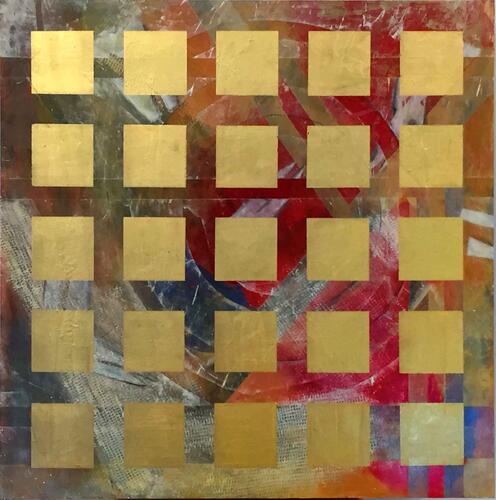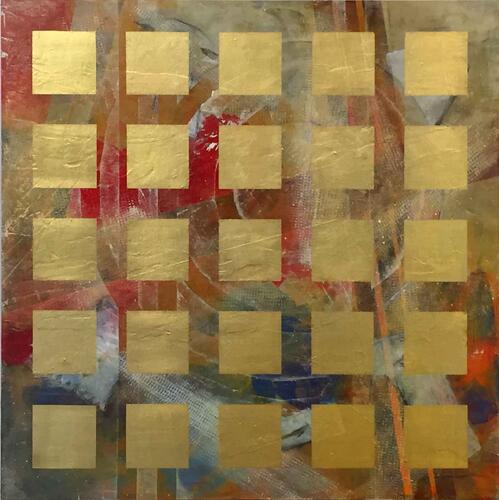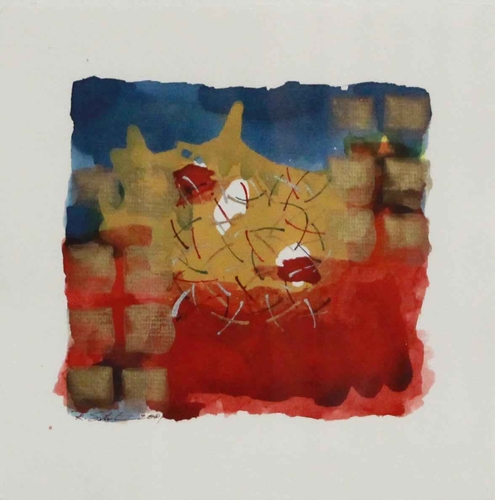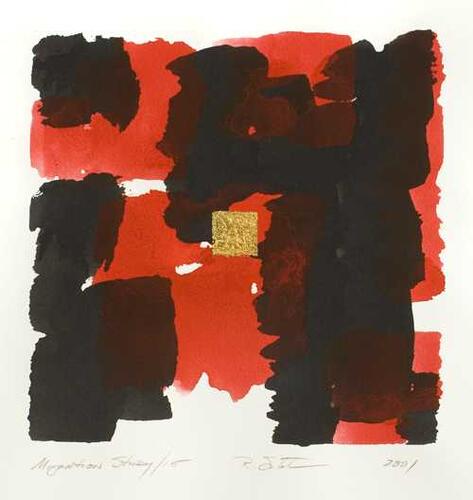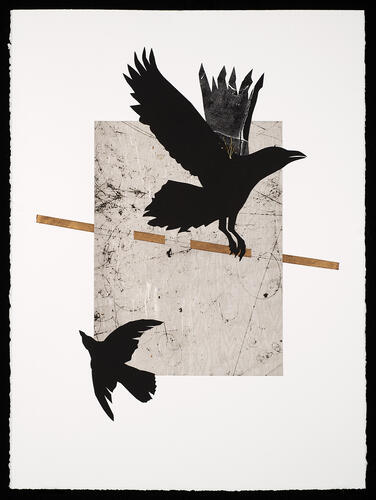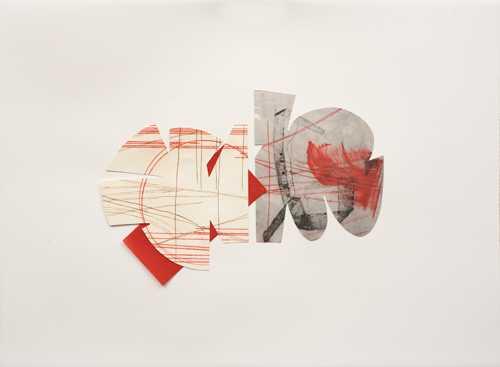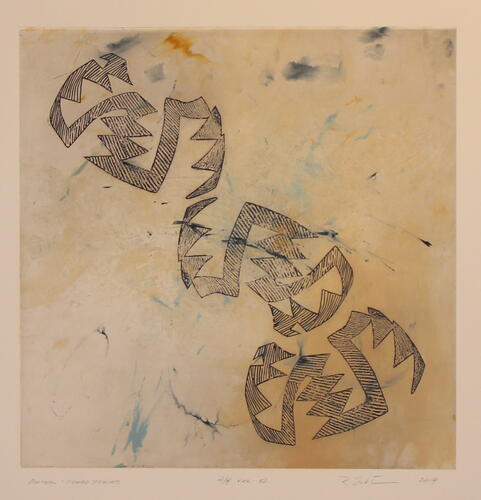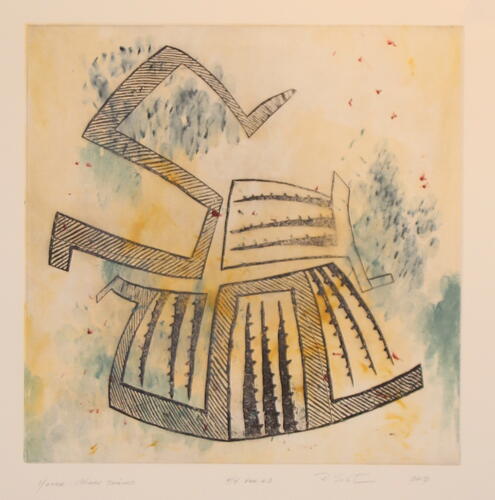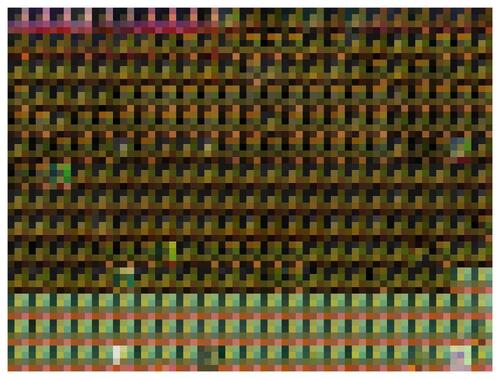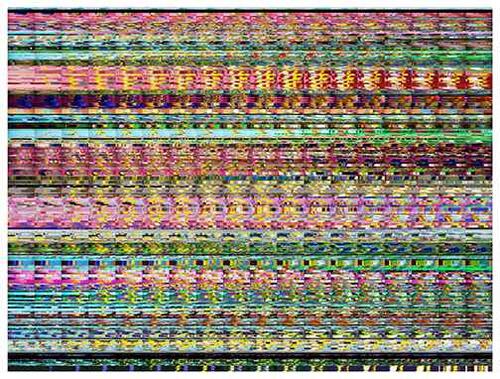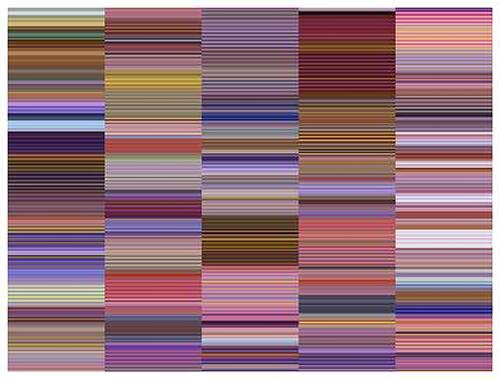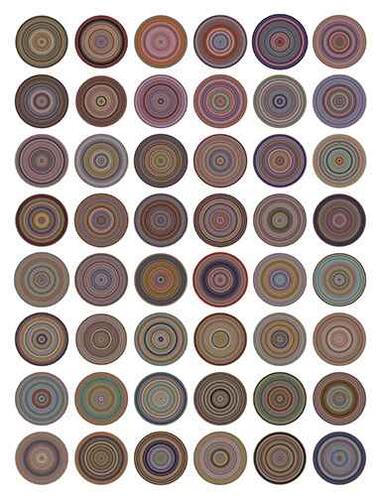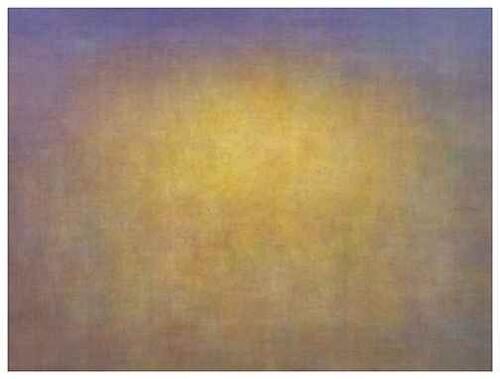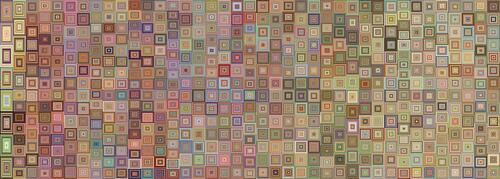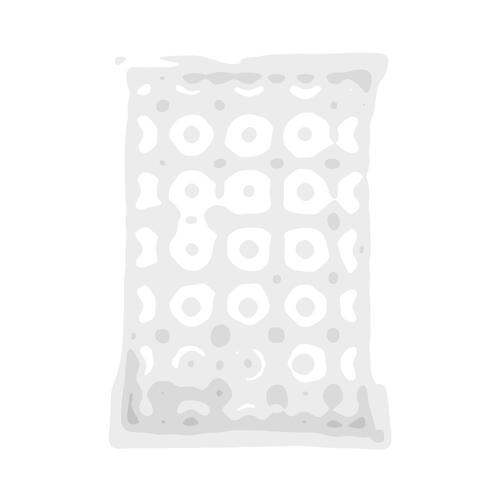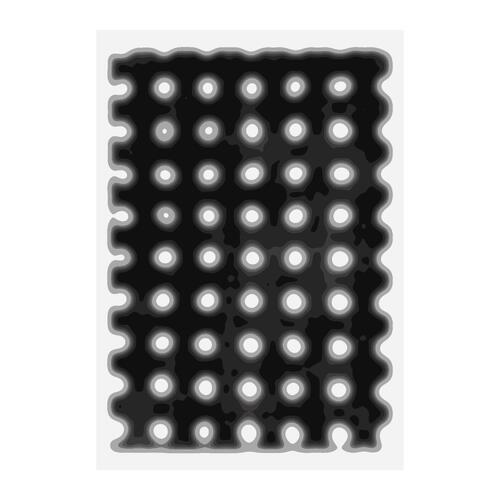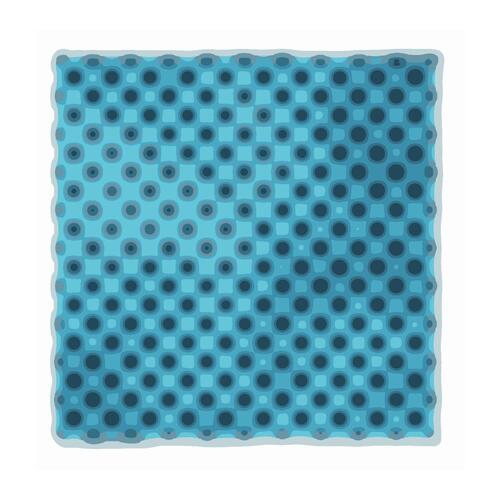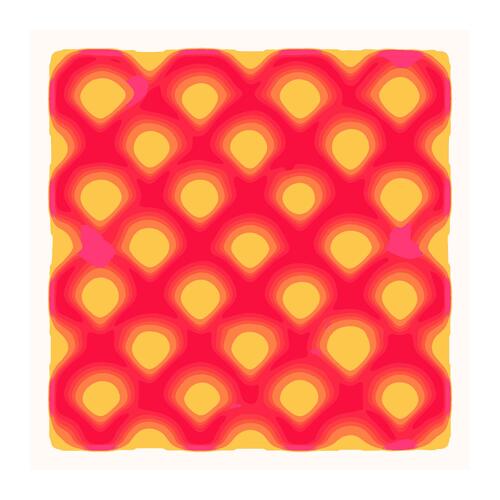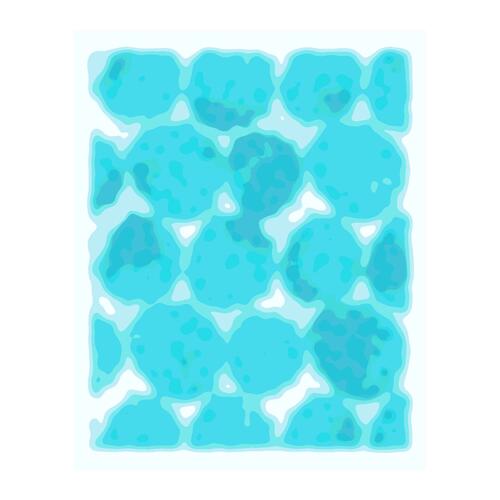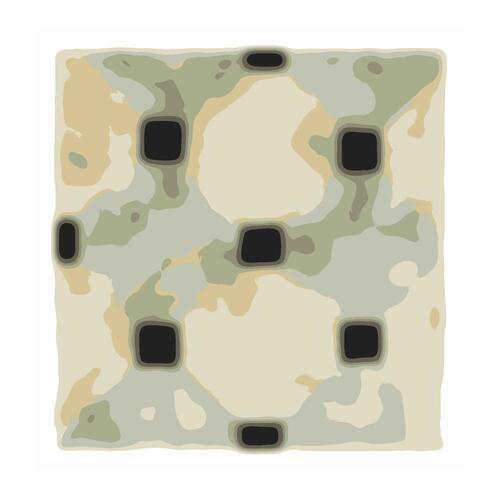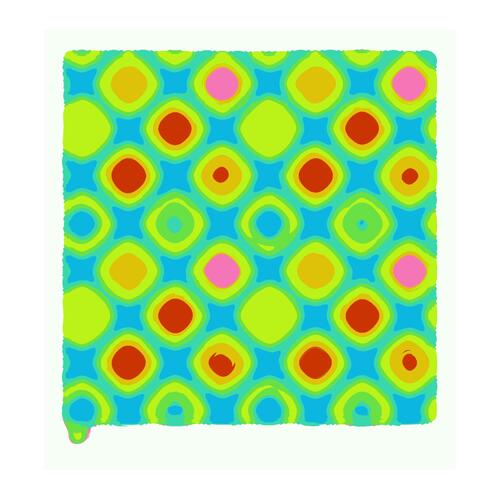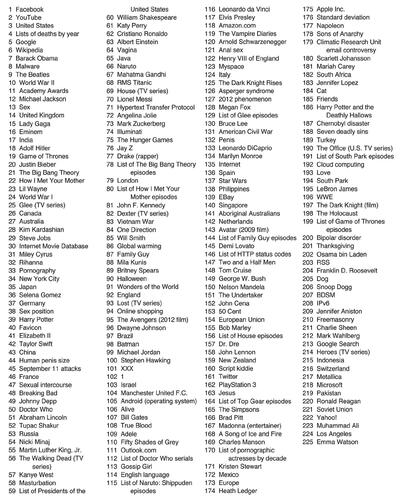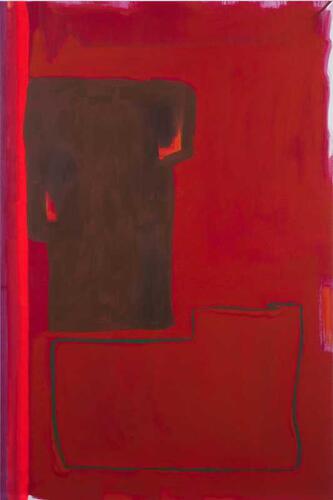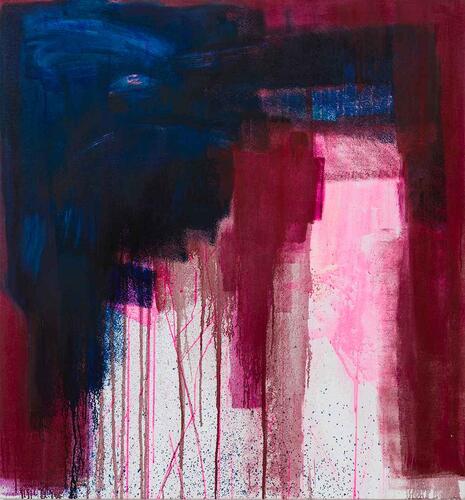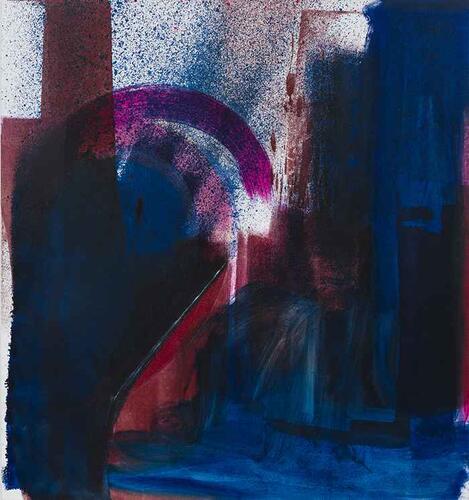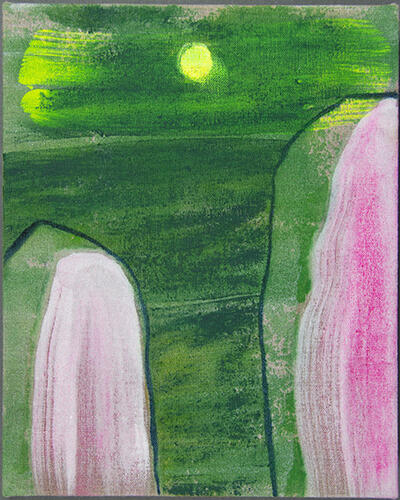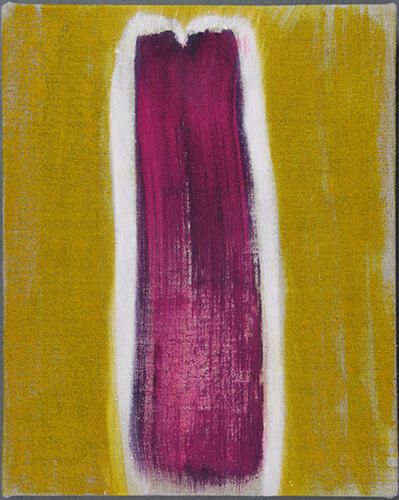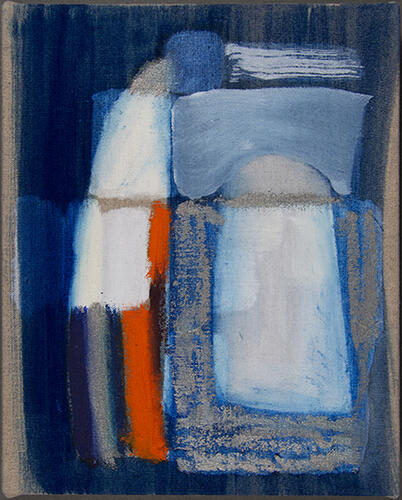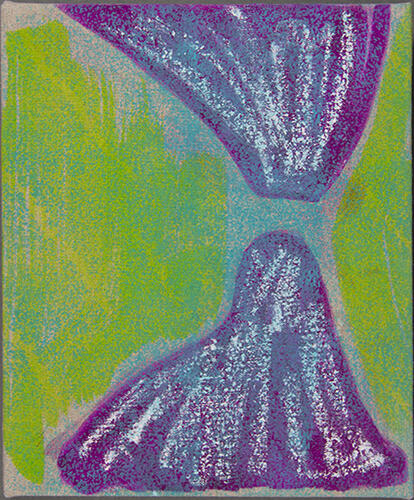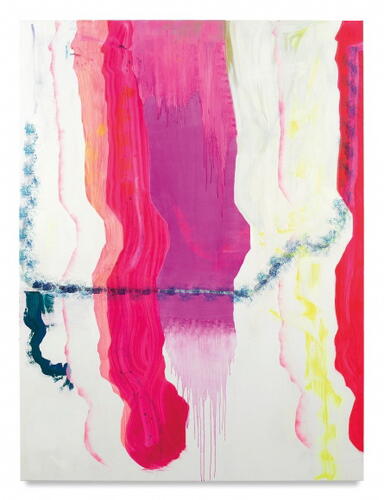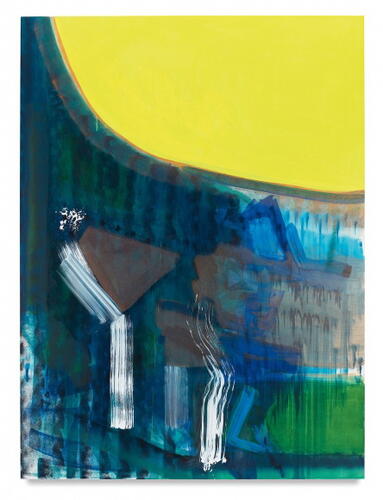TAI Modern represents 11 contemporary American artists, featuring paintings, prints, drawings, sculptures, collages, and new media.
Erik Benson’s work is highly detailed with an urban edge, creating cityscapes with his signature technique of cutting shapes from acrylic paint and applying them to canvas.
Bart Exposito makes paintings and drawings that have their basis in abstraction, but almost always incorporate some degree of recognizable imagery.
Lance Letscher’s complex collages turn into coded messages and patterns. In the titular piece a mysterious figure carries a folder overflowing with mysterious papers and tinkertoy constructions.
Robert Lobe sculpts sheets of aluminum to the spatial outlines of landscape configurations using a repoussé technique. His sculptures are not only haunting spectral images of nature abstracted, they represent an extreme re-contextualization of mechanical materials – stretching the parameters of industrial forms and methodologies.
Celeste Roberge investigates the intersection of geological and human forms. Melding the forms of river rocks, 19th century furnishings, and stainless steel, she focuses the viewer’s experience on the visceral impact of collided opposites.
John Ruppert’s sculptures address the dynamics of change. Translating vegetal forms into industrial materials, he both asserts and defies the inevitability of natural phenomena, and invests his subject matter with abstract qualities by stripping them of their original colors, details, and textures. His series of airy chain-link vessels evoke constructed boundaries, yet their delicate forms integrate fully into their surrounding environments.
Ramona Sakiestewa manipulates a complex palette of images, patterns, and surfaces. With the diversity of materials she blends shapes and layers color in dimensional constructions.
Jason Salavon is a leading innovator in new media art, Salavon uses self-designed software to pull images and data from the internet and mass media and transforms them into digital prints, videos and installations.
Monique van Genderen’s work focuses more on the versatility of her color and her use of direct brushstrokes, which result in highly lyrical compositions.

